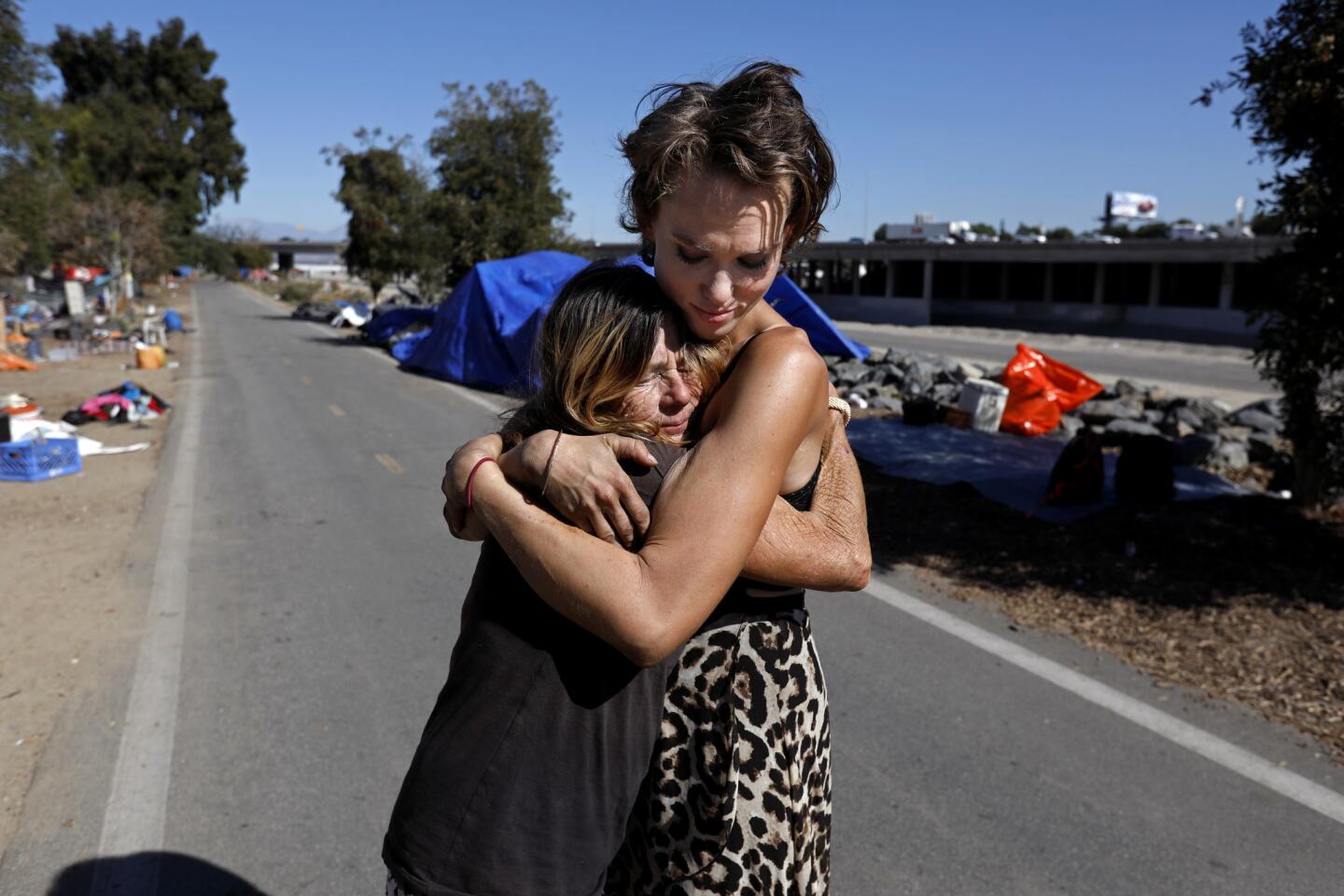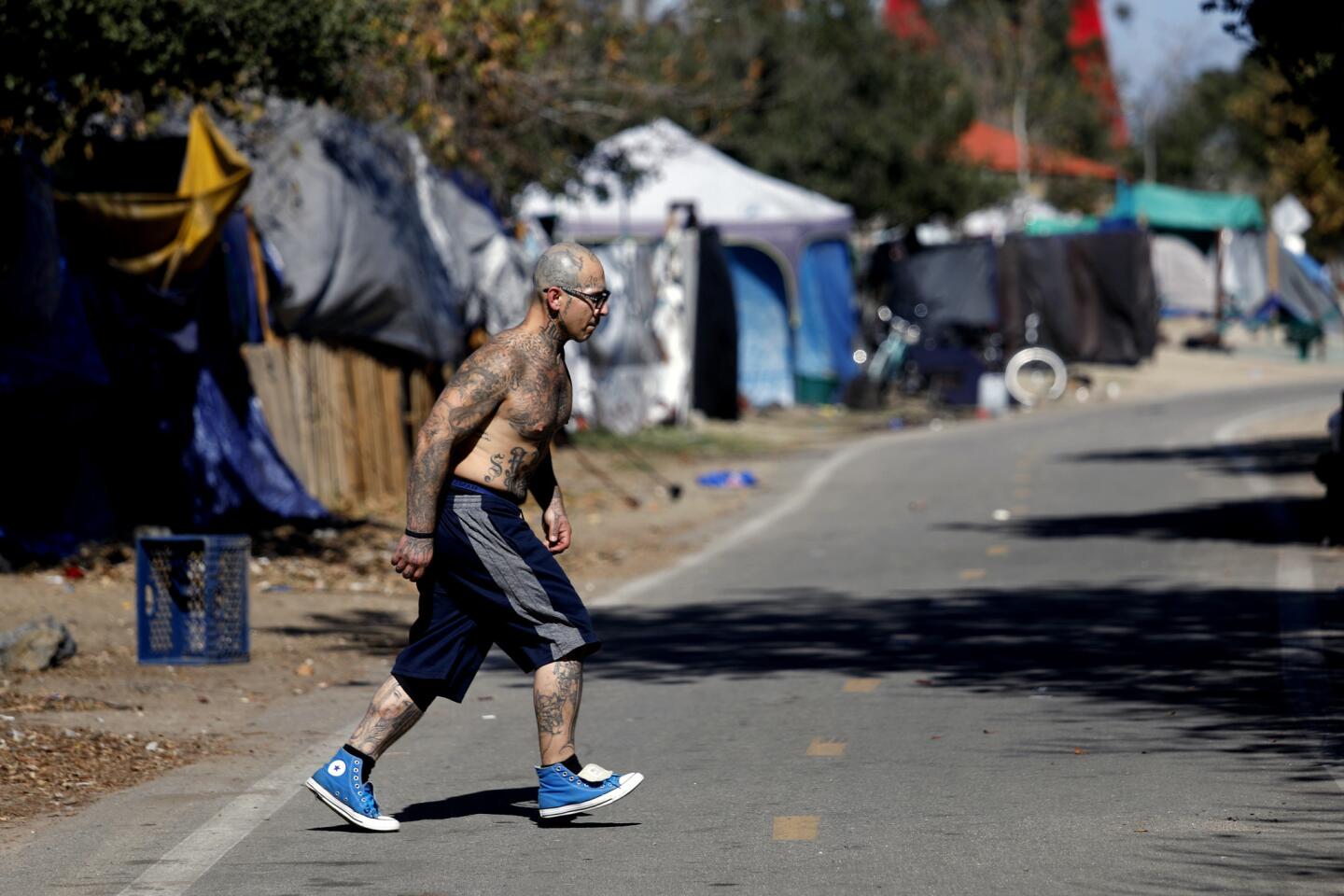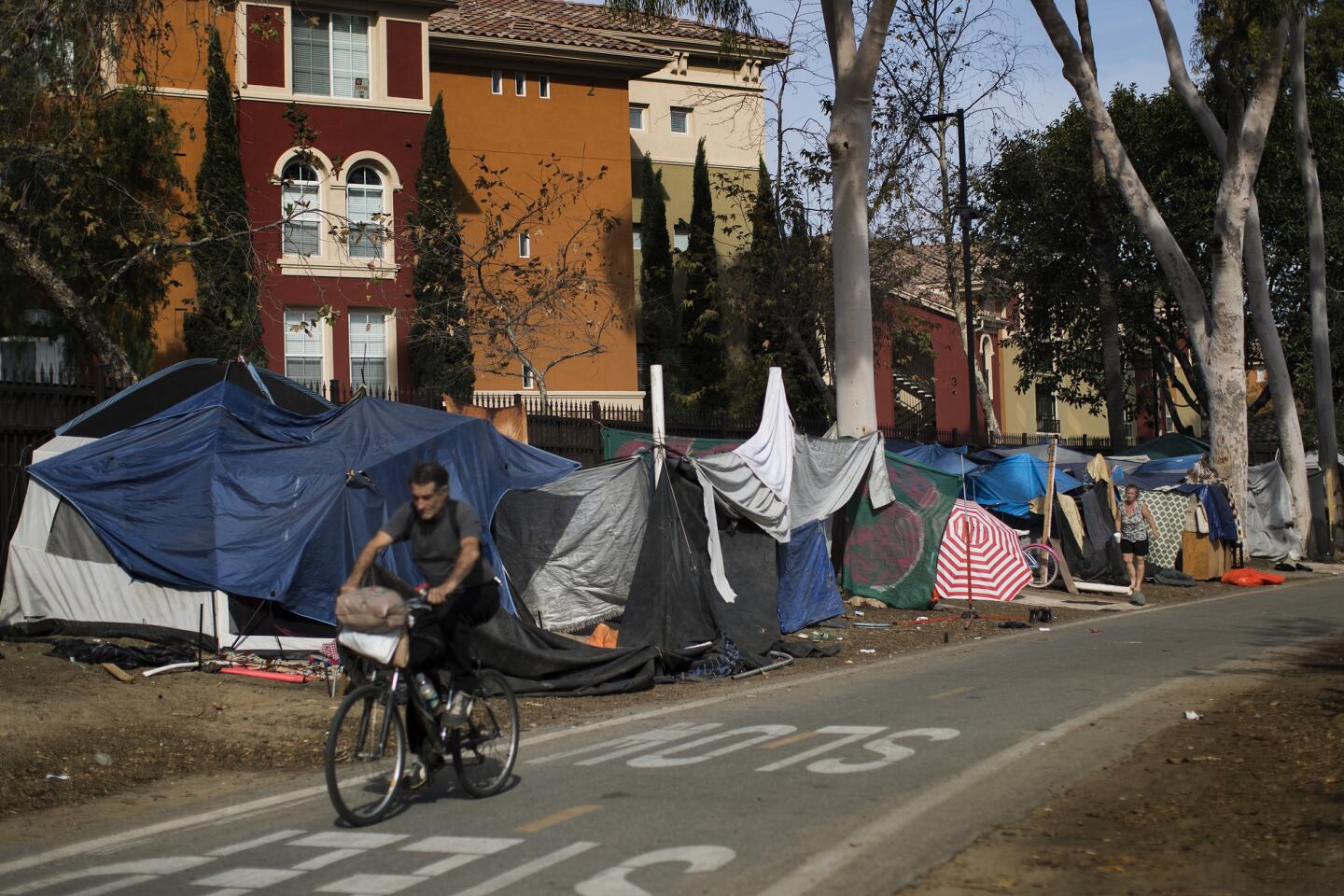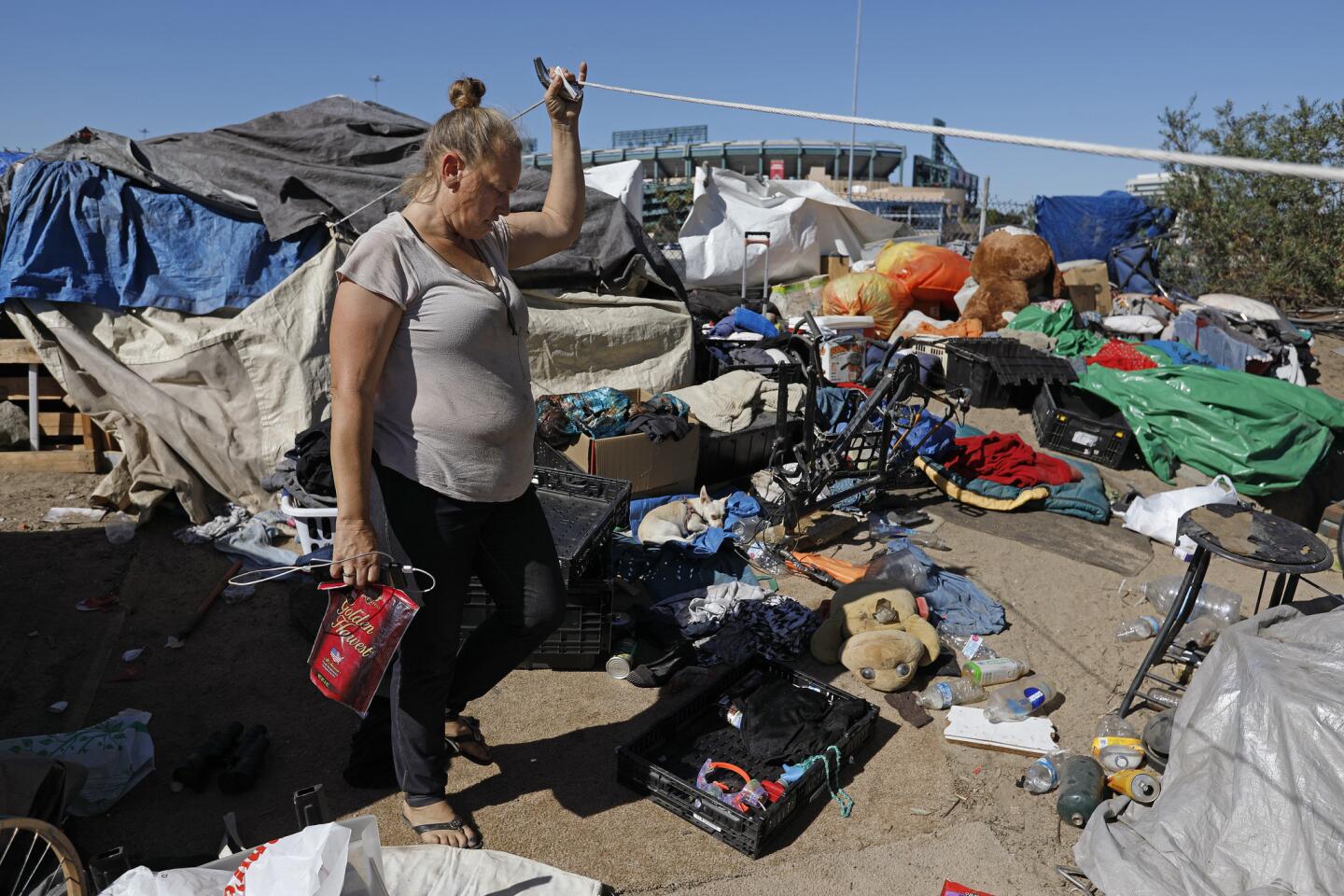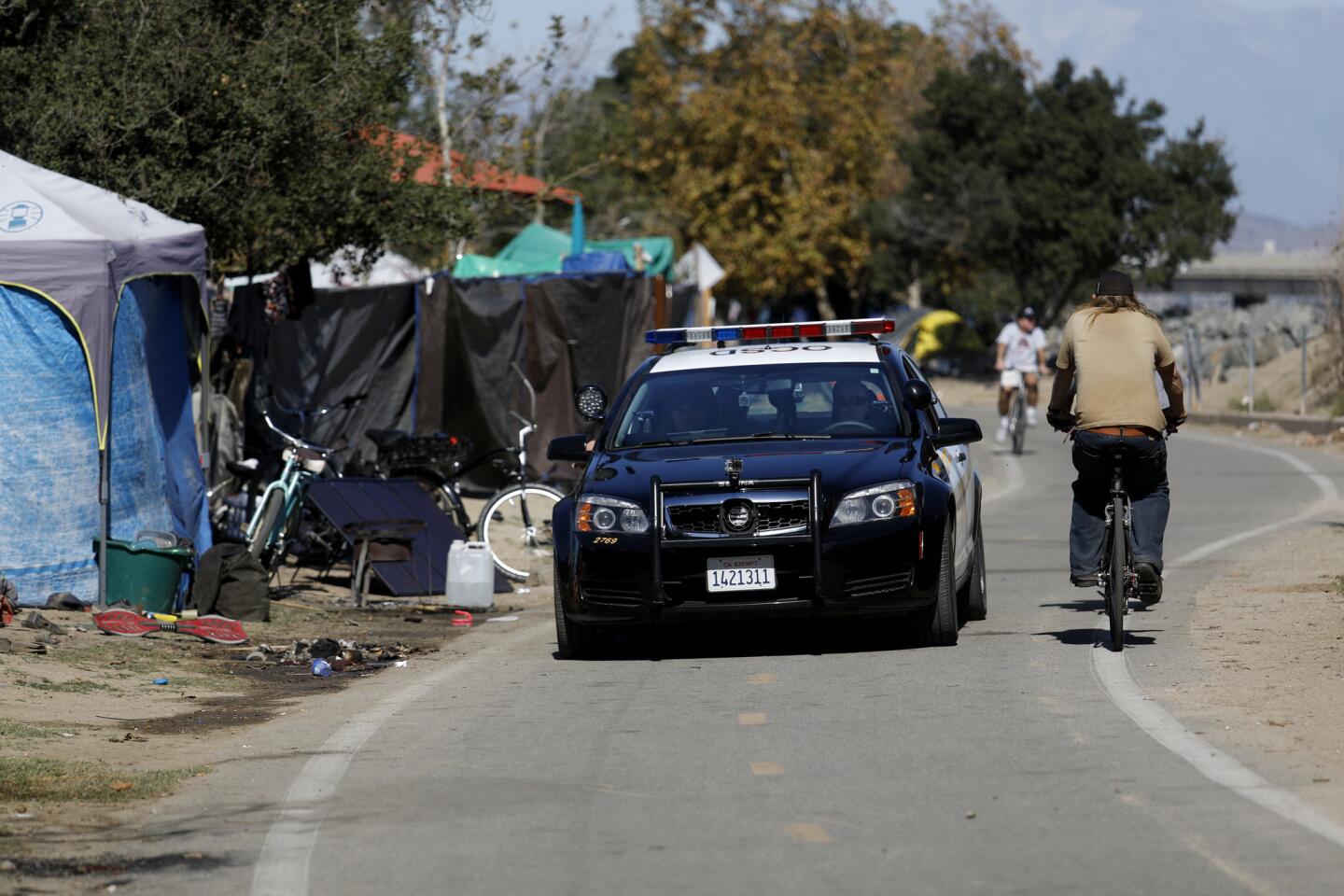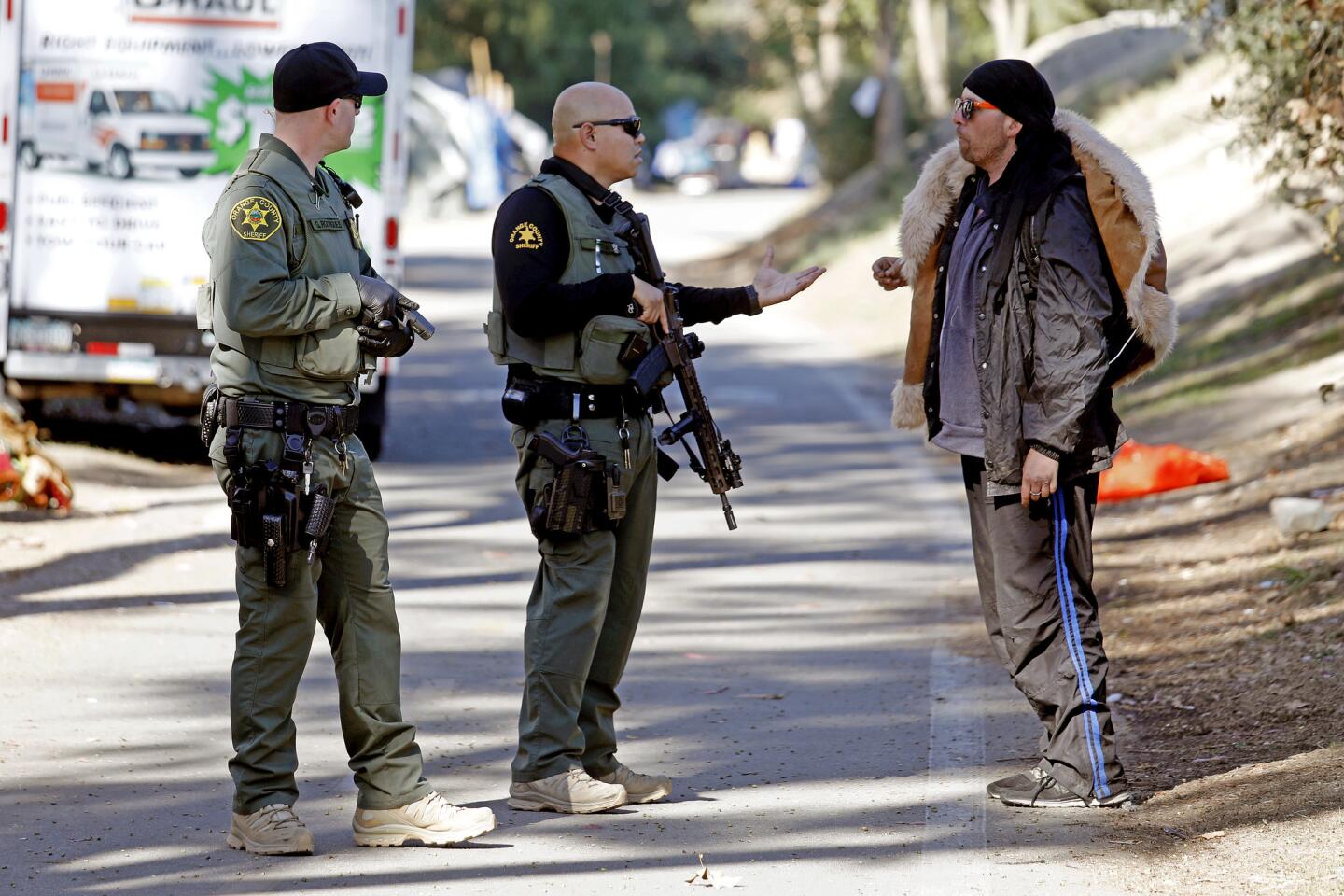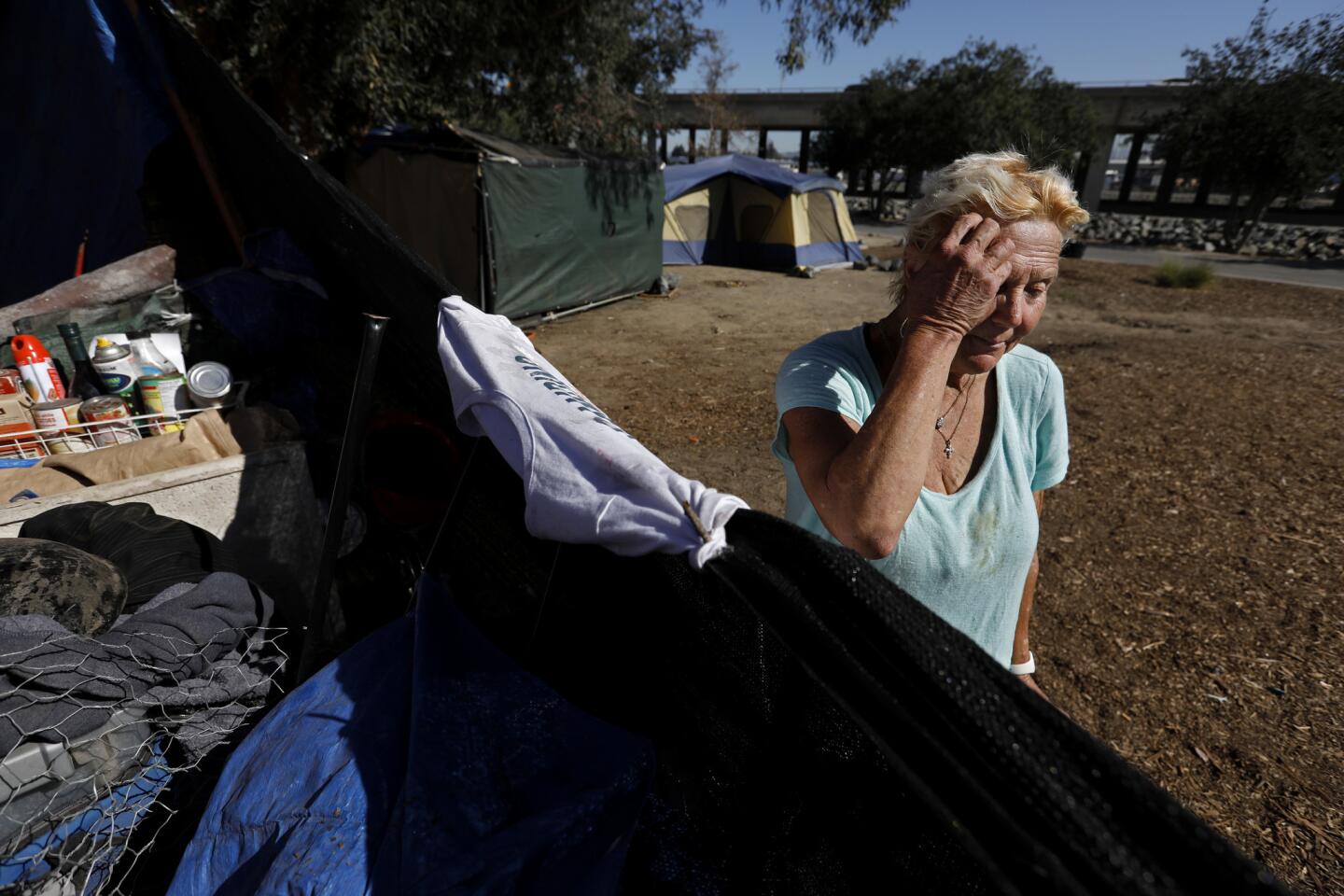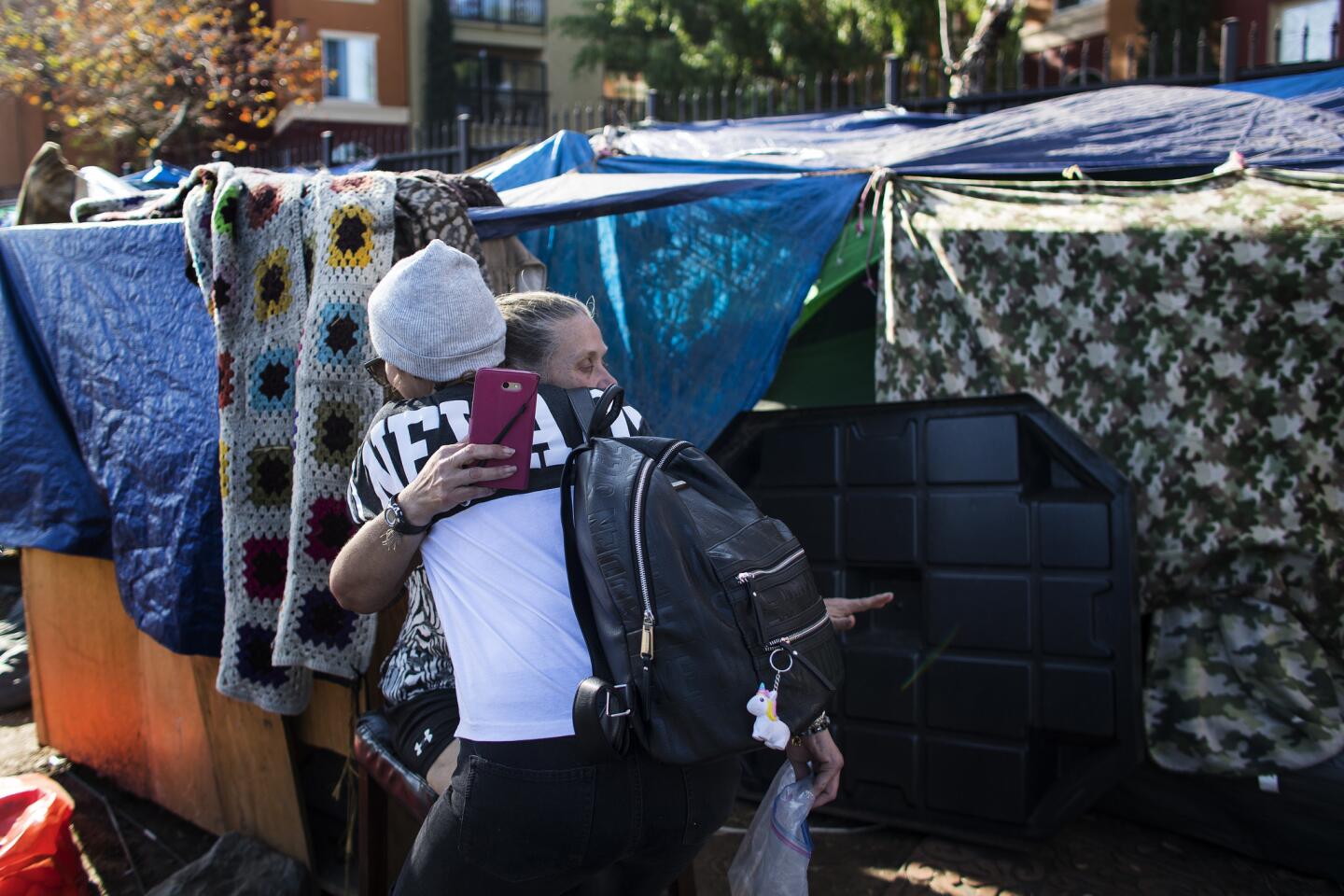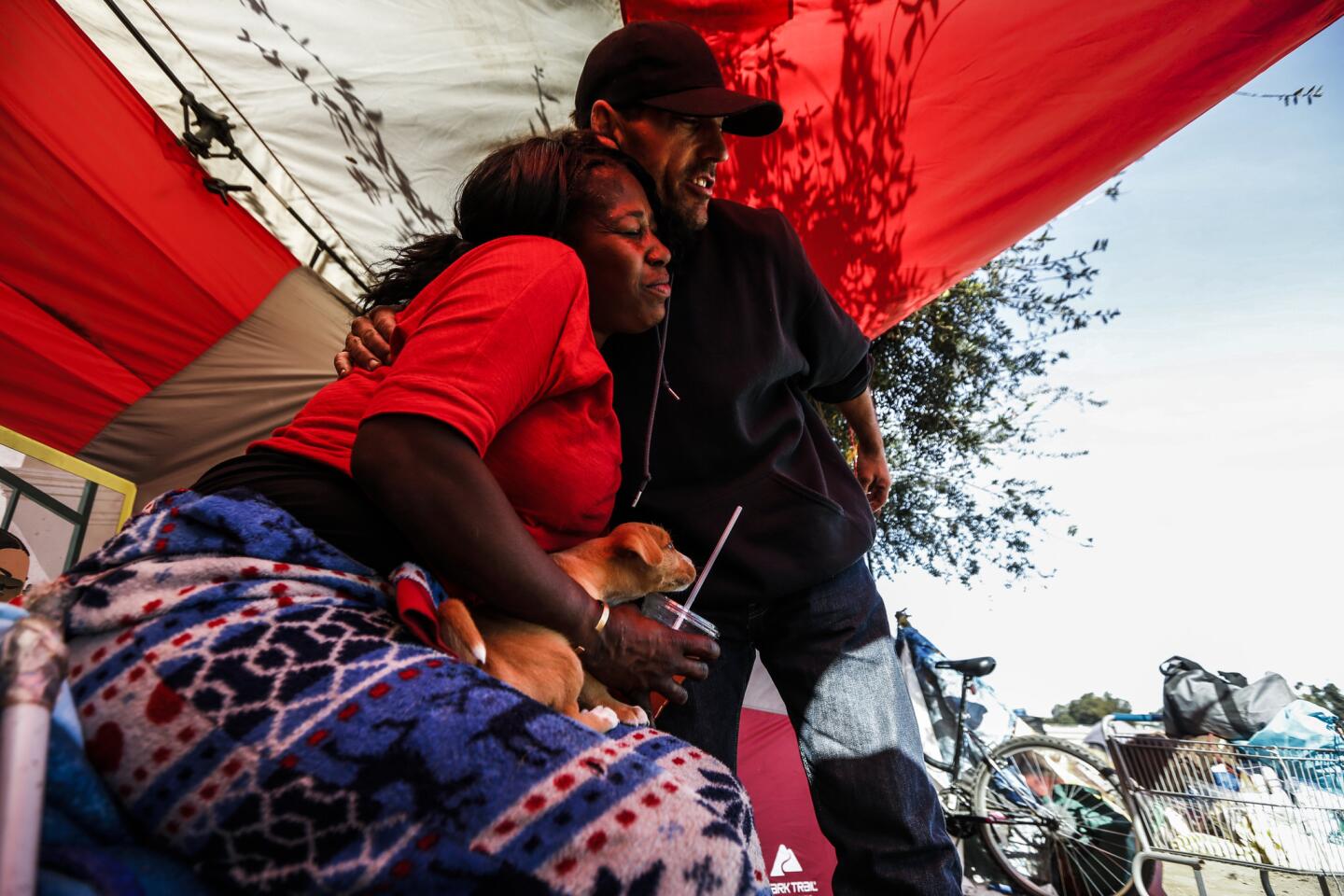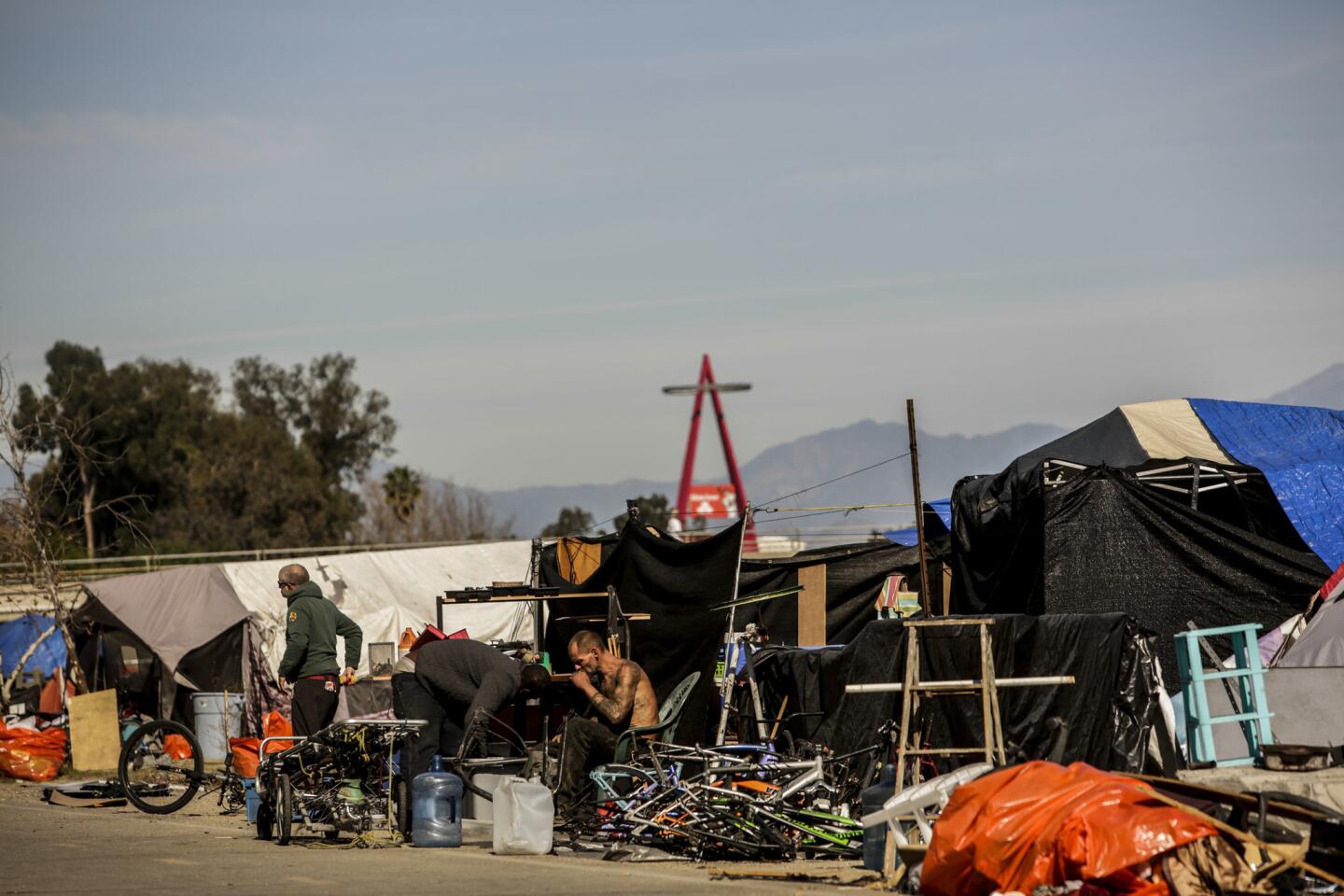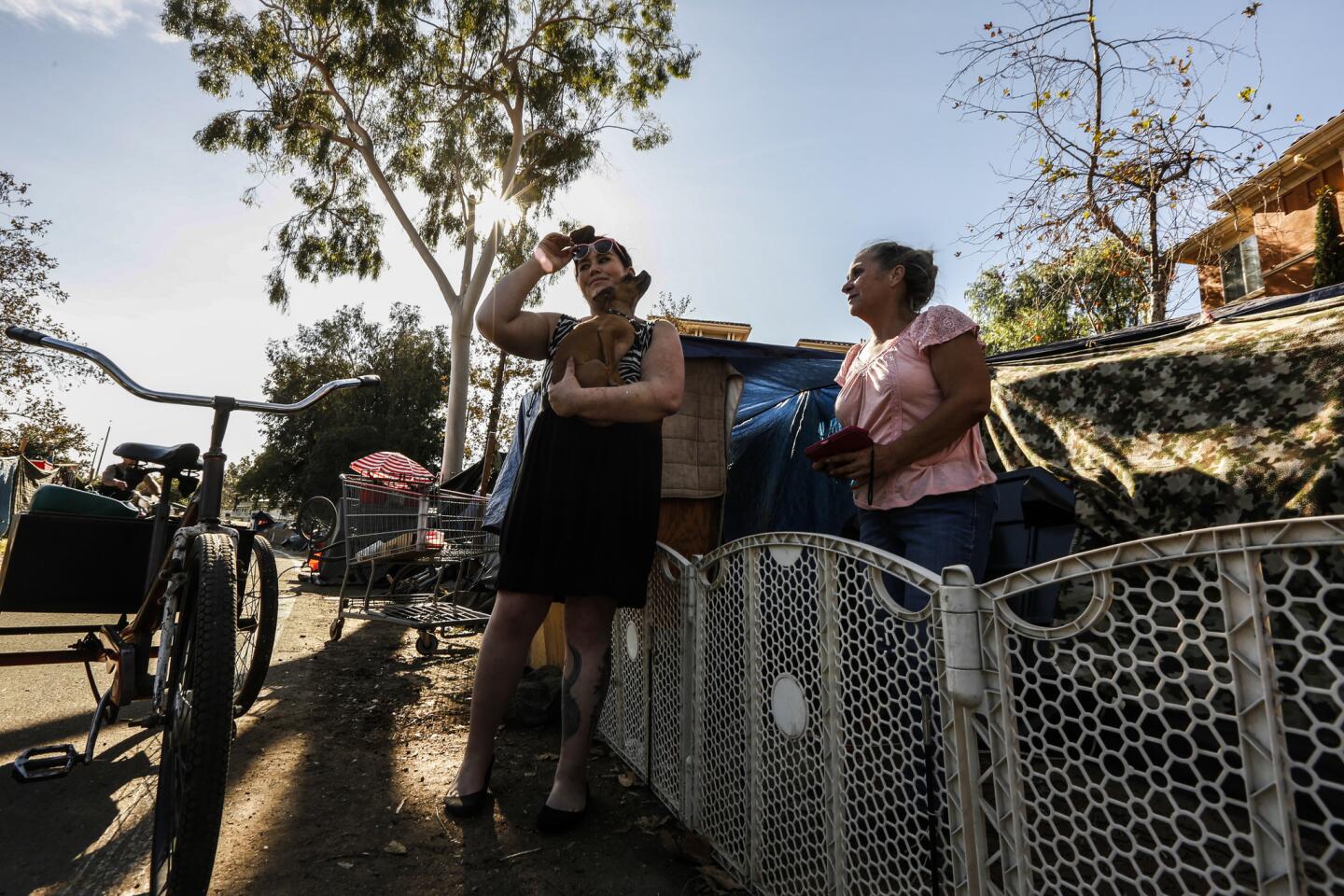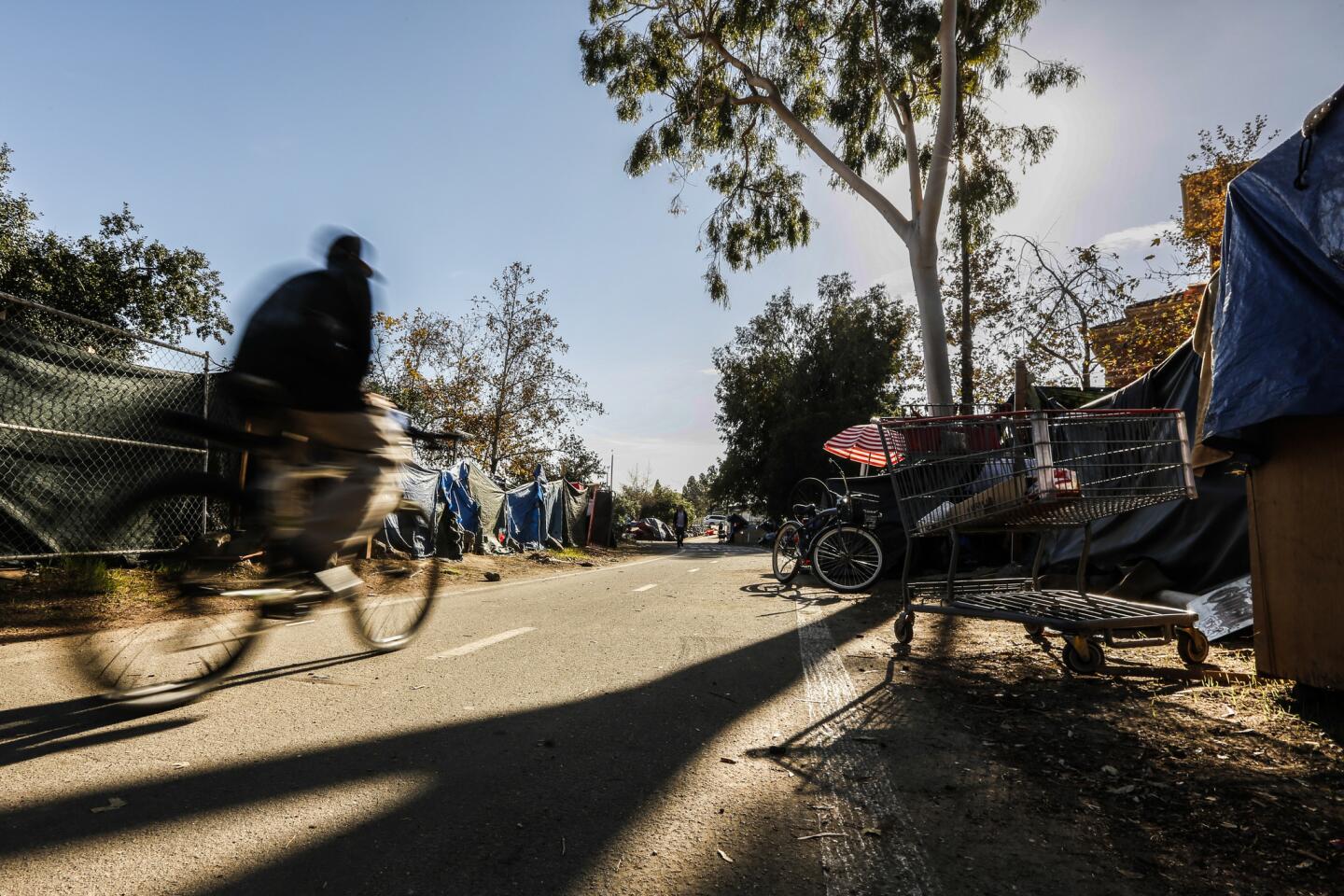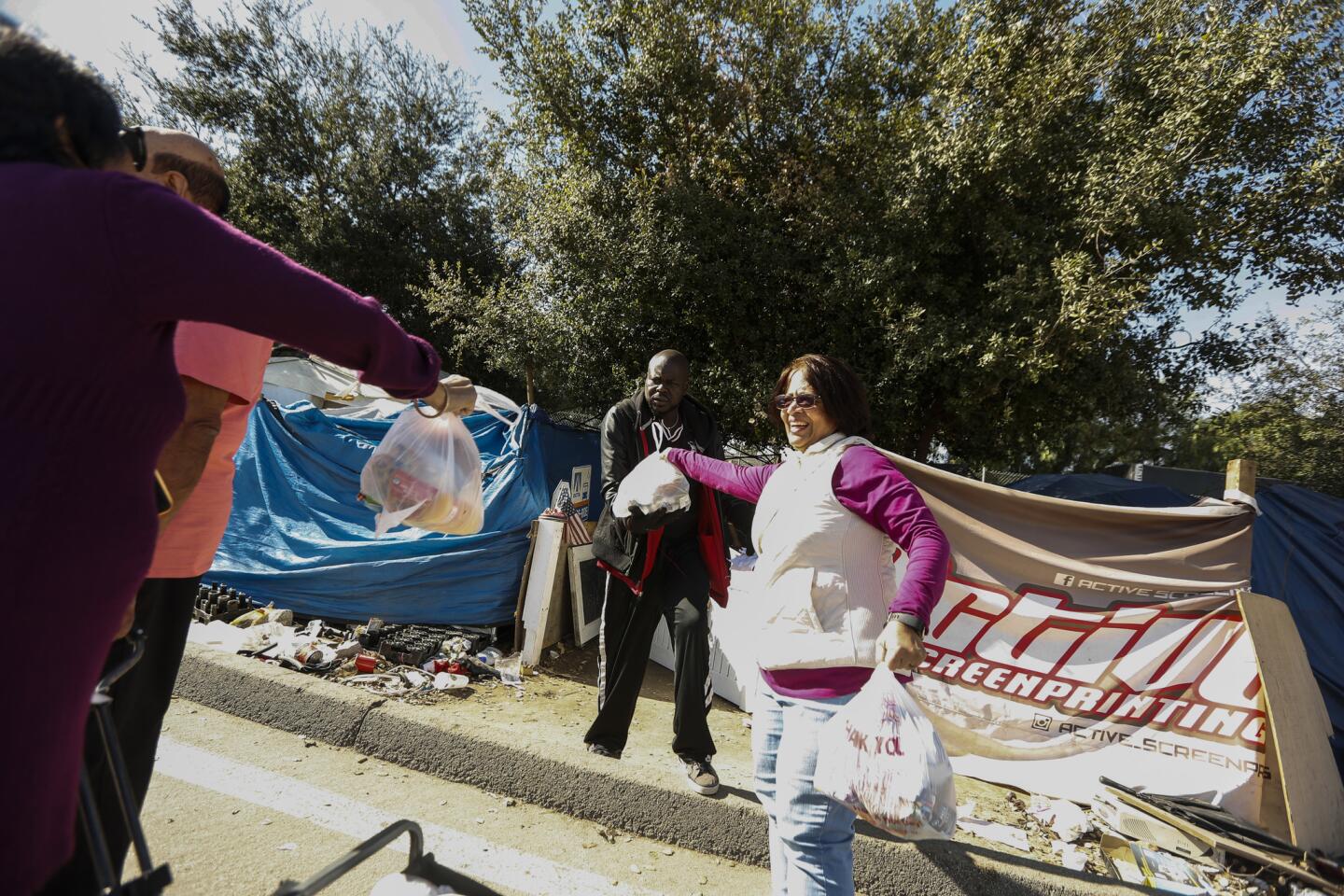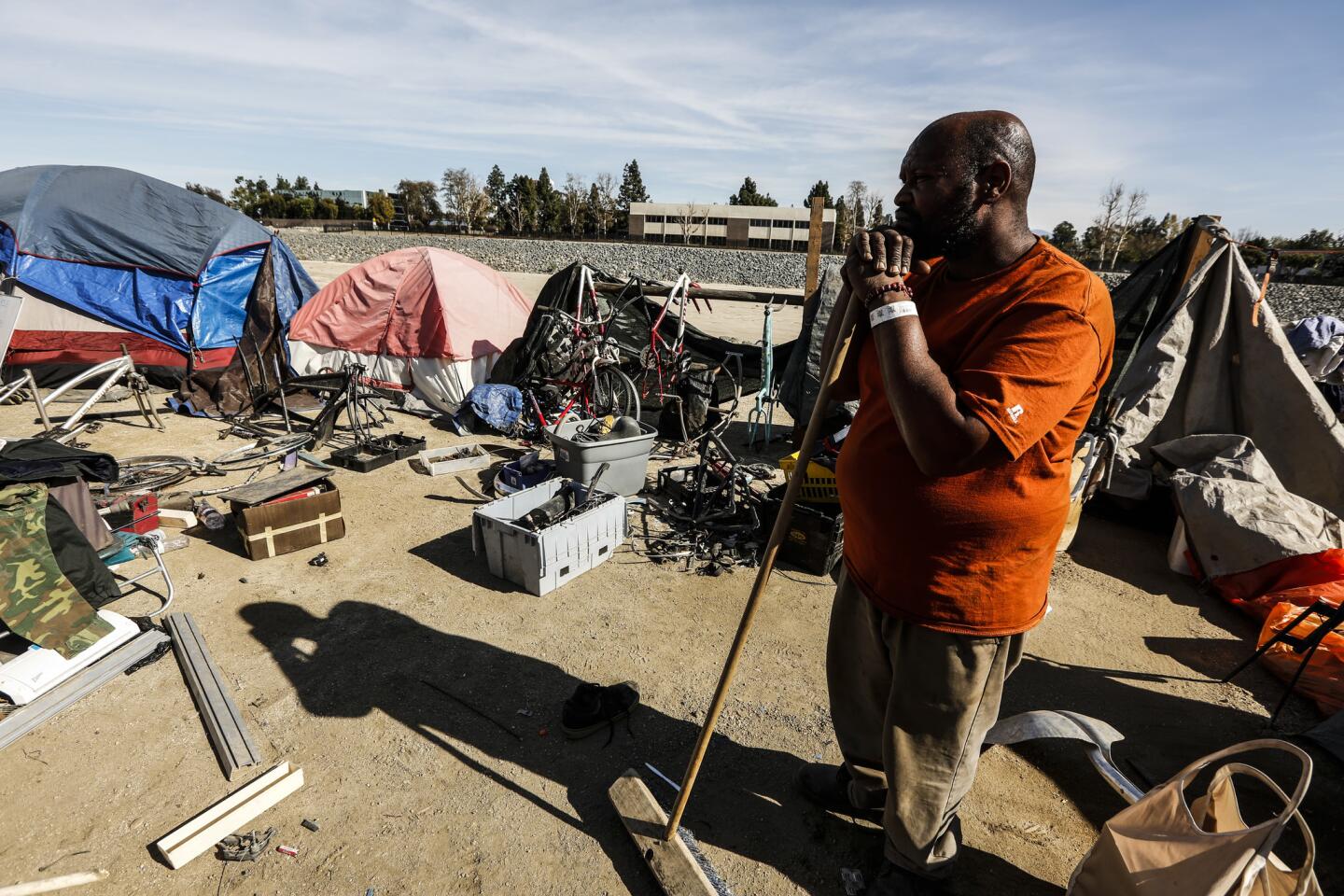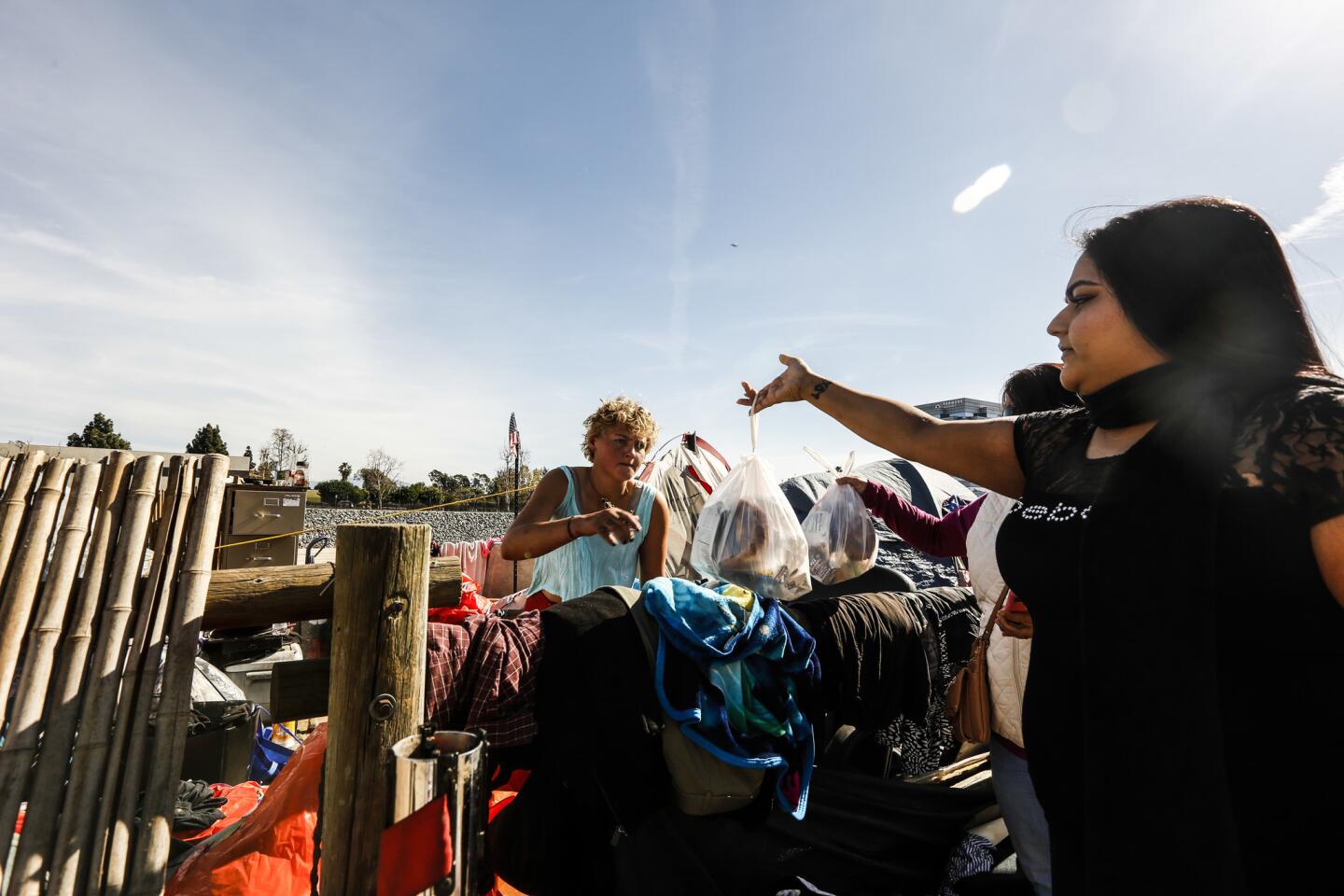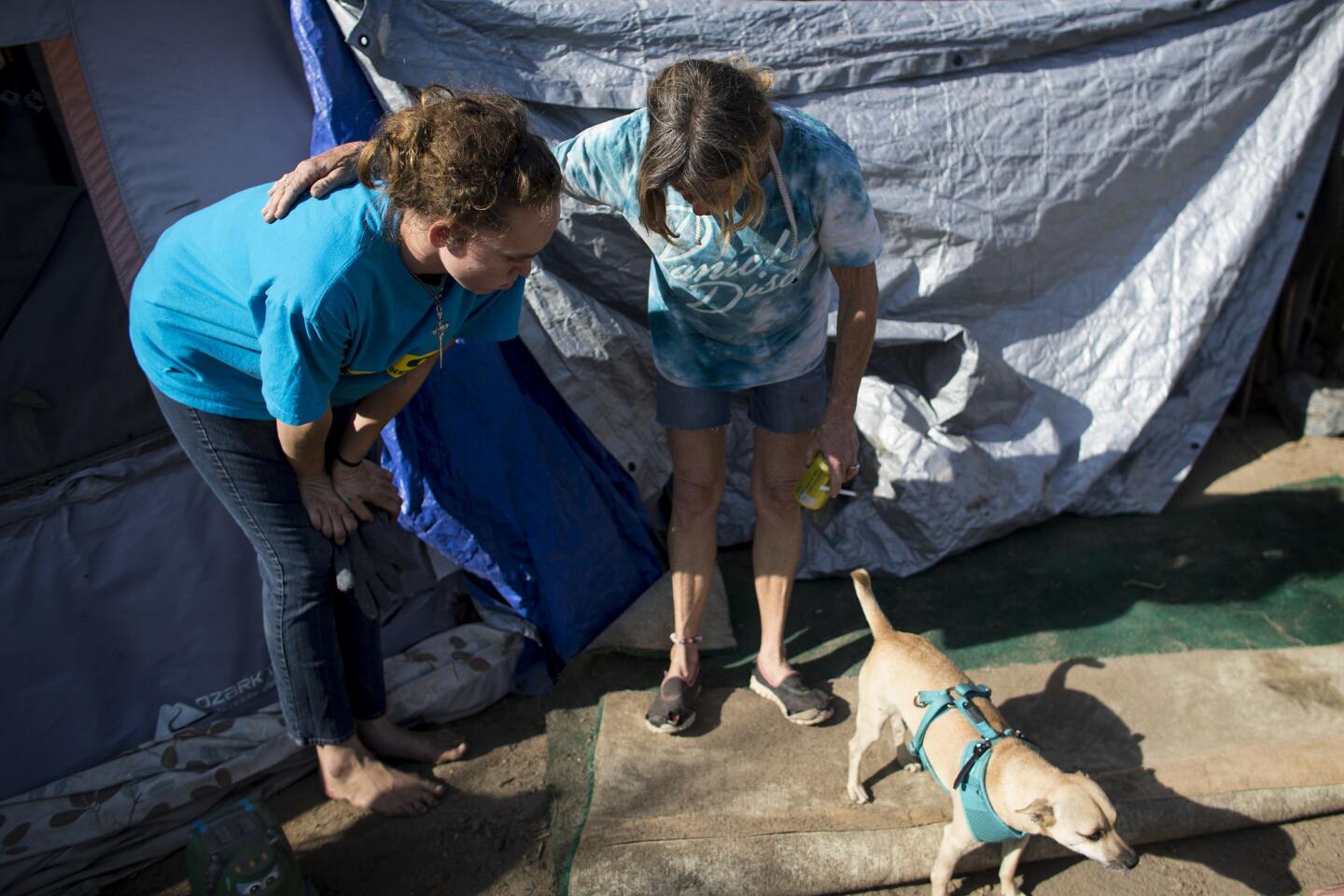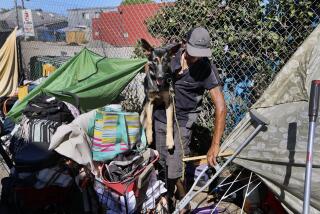More than 500 homeless people wonder where they’ll go as O.C. clears out largest encampment near Angel Stadium

For the last few months, Orange County has been methodically and deliberately clearing the massive homeless encampments along the banks of the Santa Ana River.
- Share via
When it’s finally time to pack up and go, Kathy Schuler knows she’ll bring her grandson’s toy cars.
Schuler has lived in an ever-growing homeless encampment next to the Santa Ana River for about three years.
For the record:
3:00 p.m. Feb. 14, 2018An earlier version of this story misidentified Ashley Foster as Ashley Powers.
Now her tidy area has a picket fence and a scraggly Raggedy Ann doll sitting on a wicker chair out front. It’s just a patch of dirt, but she loves yardwork and hopes to someday have a garden. The encampment looks like a home — with generators, concrete posts and even solar panels along the path.
But as she stood smoking a cigarette, Schuler’s eyes watered thinking about her grandson, whom she raised until he was 3. The boy is in foster care, but his cars stayed behind.
“I’ll go find another homeless encampment if I have to. I’ll take as little as I can, but I gotta take my grandson’s toys.”
For the last few months, Orange County has been methodically and deliberately clearing the massive homeless encampments along the banks of the Santa Ana River. They started at the Pacific Ocean and moved north. Beginning Monday, the Orange County Sheriff’s Department will start clearing the last and largest encampment near Angel Stadium in Anaheim. Officials estimate that between 500 and 1,000 people live there.
As Orange County’s homeless crisis spiraled in the last few years, the river became a favorite landing spot for those without anyplace to live. The area became the upscale suburban county’s closest equivalent to skid row. That was until complaints from residents prompted the county to crack down.
The big question now is where those pushed out of the river will go. Sky-high rents and a lack of beds for the homeless in Orange County mean that many of those evicted will have to find other public spaces to sleep, said Eve Garrow, an analyst and advocate with the American Civil Liberties Union in Orange County.
Garrow estimates there is one shelter program space for every two homeless people in the county. An estimated 4,800 homeless people are here. Officials have responded to the rising homeless population by adding 525 beds in the last year or so, with 100 more coming in 2018. But that’s far from keeping up with demand.
“The bottom line is the county’s default solution has been to not spend money on permanent solutions … and allow these encampments to develop until they become so large and visible that they have to do something,” Garrow said. “There’s no affordable housing for them, and it’s an incredibly expensive county to live in.”
This stretch of tents along a bicycle path gained further prominence after a cyclist filmed a six-minute video last July showing the scope of the problem. As he biked along the river, he made disparaging comments about the people living there. (He later apologized.) The video also underscored how the area had become unsafe for bicyclists and people trying to enjoy this long stretch of trail along the Santa Ana River.
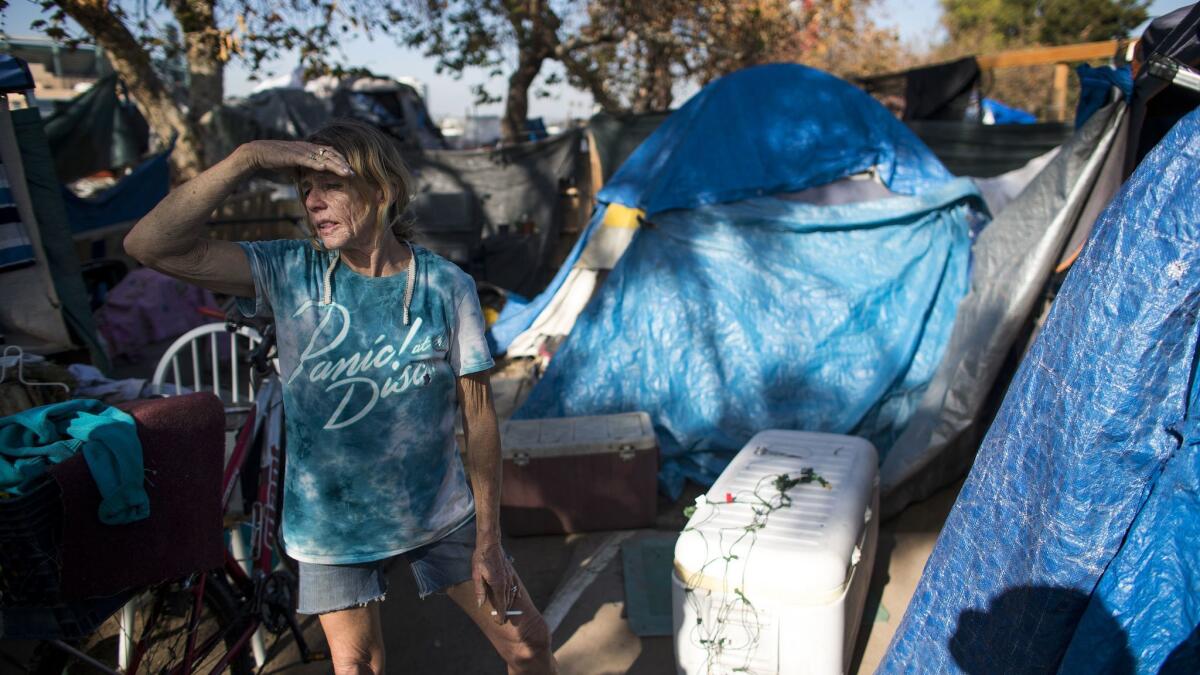
With big build-ups of trash and hazardous materials, the county plans to close the roughly three-mile stretch for at least three months to do maintenance on the flood channel and rehab the heavily polluted surrounding environment, said Shannon Widor, a spokesman for OC Public Works.
In a four-month period last fall, as the county cleared the southern part of the river, it collected a staggering 315 tons of trash, 4,600 needles and almost 4,000 pounds of biohazardous materials, including human waste, paints, solvents and pesticides.
County Supervisor Todd Spitzer said homelessness and affordable housing are a pervasive and systemic problem, and all the counties in the region need to come together to find a solution.
“I hope [the homeless here] move into the social service pipeline or move back home, or they’ll start to understand their lifestyle in the riverbed is unacceptable,” he said.
“It’s not good for them and it’s not good for the residents in the area.”
Like many here, the three generations of Schuler’s family are not sure where they will go.
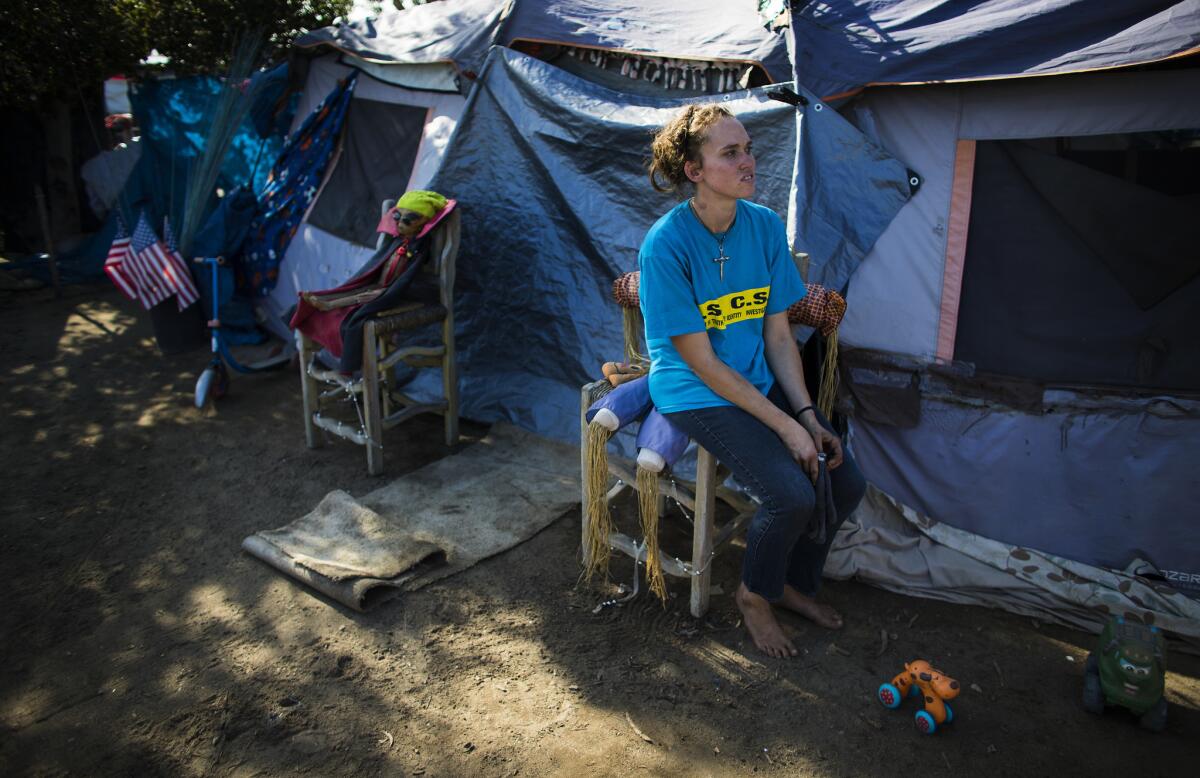
As she stood in her yard, Schuler’s granddaughter Ashley Foster, 23 — shoeless and covered in dirt — came by dragging an empty trashcan. They reconnected only a couple of years ago as Foster — who says she has epilepsy — cycled through the foster care system and attended 11 different high schools.
Foster’s mother, Tammy, lives next door.
“If my family wasn’t here, I would’ve left a long time ago,” Foster said.
Schuler and Foster share high cheekbones and bright eyes. They whispered to each other, and Schuler recommended she try on a pair of boots she had in the back. “Everything looks good on you,” said Schuler, who was wearing torn shoes that were three sizes too small.
Schuler, Foster and many others here haven’t sought help from the county’s homeless services provider, City Net, which is contracted to work with the riverbed population.
“They will go back into the nooks and crannies and fade back into the cities,” said Brad Fieldhouse, City Net’s president and founder.
Fieldhouse’s organization has an RV near the river, with case managers talking to the homeless every day. They also have two refurbished golf carts, which were donated by Disney. The managers move up and down along the river handing out bottles of water while attempting to connect their clients to homeless services.
Shane Allen, 36, rolled up to the RV in his rickety wheelchair with his wife.
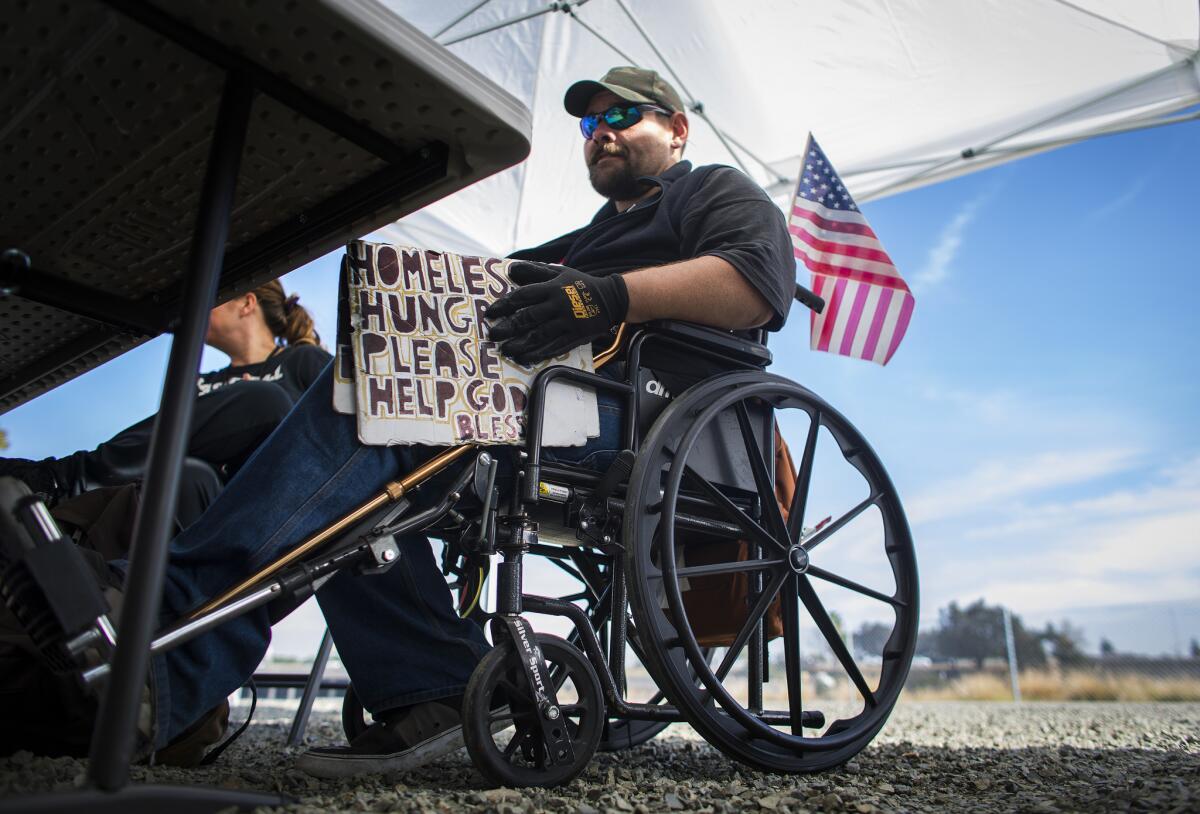
Allen explained to the caseworker that he’s a Marine Corps veteran suffering from post-traumatic stress disorder. He said he’s been homeless for six years and couldn’t access his veterans benefits. (A Marines spokeswoman said they had no record of a person with that last name and birth date who served).
Allen, who has lived here about three years, described how he is overtaken by nightmares and violent episodes, and that the only person who can calm him down is his wife. Though it is tough living, they liked “their mansion,” as he called it.
It’s “away from other people where my wife can control me,” he said.
The caseworker told him that until his veterans benefits come through, the best place for them to go is the transitional shelter.
That won’t work, Allen explained. He had heard about the shelter’s cramped conditions and didn’t want to be separated from his wife. The disabled are placed in a separate section of the shelter.
“It’s a give-and-take,” the caseworker explained. “We want to give you as much room as possible but also want to get a lot of people off the street.”
“Being out here is tough,” Allen said later. “It’s a slap in the face when we fight for our country and this is all we get.”
Another case manager then called Allen an Uber so he could run some errands and prepare to begin the intake process.
Like Allen, Lisa Bell, 51, is trying to get help. She said she is on a waiting list for housing vouchers for her and her partner, Mario. Her story is emblematic of how quickly the trappings of a stable life can fall apart.
Bell was an analyst at an engineering company, with stock options and a home in Irvine. A surgery left serious nerve damage so that now, she says, “my hands don’t work.”
“I drop everything and people will be like, ‘Why did you drop the food?’ ” she said — her hands quivering ever so slightly.
She couldn’t get medically cleared to return to work, and she was on a lot of opiates for pain.
“Little by little, I was losing everything.”
She lost her house in December 2016 and began living in her car. When she lost her car over the summer, she headed to the river, where she attempted to keep some sense of normalcy. There’s a book club — “The Maltese Falcon” is next. She watches the New England Patriots — her favorite team — on her phone.
“I’m trying to be normal and live a normal life without being complacent,” she said.
She called the communal space in her tent “the Veranda” — where a shelf of books and a photo of her and Mario sit. She tries to help the encampment’s young residents. Danielle, a young woman who lives in her car, stopped by.
“Are you guys OK?” Bell asked.
In black jeans and skating sneakers, Danielle said everything is fine and that she brought supplies. Bell says she acts as a den mother, because her 26-year old daughter once suffered from a methamphetamine addiction.
“There were times when I would kill just to know she was alive,” she said.
Now clean at a sober living facility in Westminster, Bell’s daughter often comes to the river to help her mom.
“When these people stop by, and I can help, It makes me feel really good,” Bell said. “It all goes back to my daughter.”
More to Read
Sign up for Essential California
The most important California stories and recommendations in your inbox every morning.
You may occasionally receive promotional content from the Los Angeles Times.
